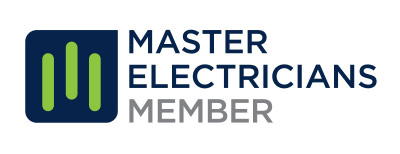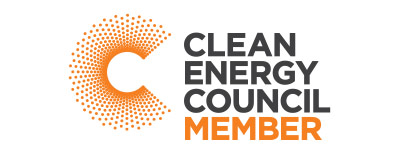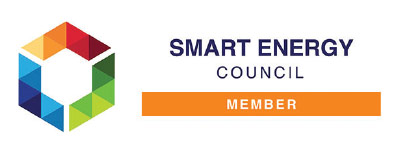Drones have emerged as a valuable tool to address a wide range of problems and collect valuable performance related data for asset inspection.
Value delivered

Title
Lorem ipsum dolor sit amet, consectetur adipiscing elit, sed do eiusmod tempor incididunt ut labore et dolore magna aliqua. Habitasse platea dictumst quisque sagittis purus sit amet.

Title
Lorem ipsum dolor sit amet, consectetur adipiscing elit, sed do eiusmod tempor incididunt ut labore et dolore magna aliqua. Habitasse platea dictumst quisque sagittis purus sit amet.

Title
Lorem ipsum dolor sit amet, consectetur adipiscing elit, sed do eiusmod tempor incididunt ut labore et dolore magna aliqua. Habitasse platea dictumst quisque sagittis purus sit amet.

Title
Lorem ipsum dolor sit amet, consectetur adipiscing elit, sed do eiusmod tempor incididunt ut labore et dolore magna aliqua. Habitasse platea dictumst quisque sagittis purus sit amet.

Title
Lorem ipsum dolor sit amet, consectetur adipiscing elit, sed do eiusmod tempor incididunt ut labore et dolore magna aliqua. Habitasse platea dictumst quisque sagittis purus sit amet.
For example, accessing hard to reach locations, entering dangerous areas or zones without human presence, obtaining previously unobtainable information and increasing field operator safety. Drones do all of this, and more, with far more cost efficiency compared to airborne planes or helicopters. This is just some of the benefits that drones have served asset owners.
The timing and growth in drone technology has fortunately arrived at exactly the right time for the renewable energy industry to utilise. This situation has also been helped along by the advancement in artificial intelligence (ai) software, aviation tech, lithium battery tech and miniaturisation of image sensors. Using a drone 10 years ago was quite a different experience than it is today and much more expensive. Thankfully, this has now changed.
In the solar industry drones perfectly compliment testing and operations roles by having the ability to observe the system from above, cover great distances daily and carry a wide range of different sensors and cameras to collect a mixture of different data. It is the data that creates improvements and delivers new knowledge to the user. It is the drone that has the capability, capacity and accuracy to collect and it is the ai that is identifying and categorising the flaws found in these datasets to help simplify reports. These factors combine to deliver both a cost effective and time saving solution to preserving the lifespan of solar infrastructure.
So, what can we collect, achieve and solve using drones in the solar industry? A lot!
And that’s what makes these devices such powerful tools to bring onto your site.
ScanPro helps our clients with issues ranging from condition monitoring, predictive maintenance, quality control and compliance. Or storm and weather event management, we can provide a solution to address all of these requirements using drone acquired data.
ScanPro’s drone data service methods include:
- 2D aerial mapping
- 3D realistic modelling
- Photogrammetry – point cloud / 3D models
- Infrared Thermography
- LiDAR – point cloud / 3D models
- Multispectral vegetation models & analysis
2D Aerial Mapping and 3D Modelling
Orthomosaic’s and Photogrammetry
Aerial mapping and the creation of 3D digital models has become a cost effective solution for commercial and corporate companies to consider investing in since low cost drone services have proliferated. The benefit of having access to up-to-date aerial maps or 3D digital models provides engineers, project managers, estimators and field staff with a quick visual answer to the site construction progress, operating health, safety concerns and degradation over time.
Mapping and 3D modelling is directly linked to the identification in flaws, mishaps and construction errors and these can be measured and observed using aerial maps. Identifying if a project is heading in the wrong direction early is critical to keeping within budget. Monitoring build times and controlling wastage or resources is important to maintain within allocated costs. Sharing aerial maps within your team can provide them with information to make more effective decisions. The cost of creating a map or 3D digital model could pay itself back in the first use case.
2D orthomosaic mapping and 3D digital Photogrammetry has capabilities to support the solar industry. Some the areas where it supplies solutions is:
- Broken glass solar panels identification (modules)
- Soiling and pollution build-up on solar surface
- Discolouration of EVA and silicone cells
- Dislodged panels on trackers
- Broken trackers
- Vegetation overgrowth
- Pest vegetation tracking
- Barcode reading
- Visual documentation
- Civil works
- Construction progress reporting
- Run-off erosion
- Geospatial solutions
- Alter and upgrade site designs
- Stockpile measurements
- Track earthwork progress
- Installed terrain and planned installation
Trusted service
ScanPro is Australia’s largest supplier of PV aerial thermographic inspections. With over 500 mega watts of aerial ops already completed and a further 3.5 giga watts in the pipeline we are helping guide Australia’s PV construction companies with a trusted source of actionable data. ScanPro has already reviewed over 1.4 million energised PV modules connected in the field across Australia.
Our work is conducted within IEC 62446-3 requirements and parameters and infrared level one and two certified operators always attend site. We have over 18 years experience in the electrical industry, over 9 years conducting infrared inspections and 8 years working in solar.
LiDAR Point Cloud Modelling
LiDAR is an amazing method for imaging terrain which uses millions of near infrared or ultraviolet laser pulses that strike the surface from above to build a 3D model. LiDAR is an acronym of “light detection and ranging”. This technology was previously too expensive for commercial businesses to afford. Thankfully it has recently advanced to a point where the benefits of this data collected method can now be enjoyed and utilised by more than governments and the military.
LiDAR provides a rich immersive solution to 3D modelling which holds the capability of extracting so much more than an image or photogrammetry can. It is also easier to acquire the data and can deliver much more detail than photogrammetry can. LiDAR’s ability to penetrate through the canopies of trees and holes in structures gives it additional capabilities to reveal vast amounts of previously unobtainable information and a more immersive experience.
Building a terrain model of your site using LiDAR can help you to understand more about the land and how the environment is changing the shape of your land. This could unlock characteristics that will help guide you to making smarter decisions on civil works, road and drainage repairs or locations to build and expand your project.
ScanPro is using LiDAR in some very special ways to help the solar industry with complex and expensive issues surrounding solar PV tracker systems. We can model these and extract information about movement, sinking or heaving or mis…
ScanPro can create:
- 3D models of your site – colourised or non-colourised
- DTM Digital terrain models
- DEM Digital elevation
- Vegetation encroachment detection
- Change detection
Multispectral Imaging
Multispectral imaging and hyperspectral imaging are methods of image analysis that use various wavelengths across the electromagnetic spectrum to dissect different types of vegetation and landforms when observed from above. Multispectral imaging has been used for many years by the military and environment .
ScanPro uses multispectral imaging to help the energy sector identify vegetation species and the spread of certain types of plants. This information helps our clients manage their sites vegetation levels, the treatments required, if any. And the locations of where additional maintenance is required.
Multispectral imaging is very good at vegetation control due to its ability to be easily identifiable in aerial maps which can categorise species clearly via different colour prompts on a computer screen.
Measure plant growth state, stress factors and the location of diseases and pests. Use this information to reduce treatment costs, pinpoint application to reduce field operations and save on wasted labour and resources. Reduce your environment impact by only applying what is required.
ScanPro can use Multispectral imaging to address:
- Arable land mapping
- Pest species identification
- Water run-off
- Targeted fertiliser application
- Targeted watering application
Deliver confidence, build credibility and support investment.



